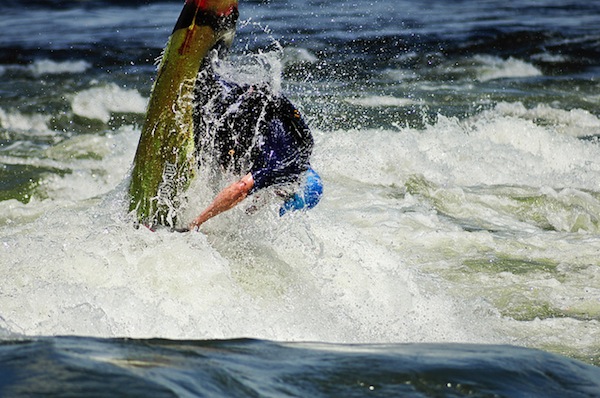Worst-Case Wednesday: How to Play Out of a Water Trap
Many mishaps can occur on the golf course. Your golf cart breaks down. You hit the ball into a tree. Or sometimes, you get a little too into the game, maybe loosen your aim a little too much and you hit the ball square into a water trap. It happens to everyone, right? Right?
To fix it and still make your shot without just stepping in blindly, let The Worst-Case Scenario Survival Handbook: Golf tell you how it’s done:
1. Determine what is under your ball. Ascertain what is beneath the water and whether you are hitting off sand or a rock bed before you take the shot. Unknowingly swinging into a hard surface can do significant damage to your hands or wrists and your club.
2. Calculate the ball’s depth. The more of the ball that is showing above the water line, the better. The reliability of executing this shot decreases considerably if the top if the ball is more than half an inch below the water line.
3. Take off your shoes and socks. If you cannot stand on the bank, step into the water barefoot.
4. Wear a raincoat or other foul-weather gear. There will be a large spray that may include mud.
5. Grip the club firmly. Because the club will be moving through something with a high resistance—water—the club head will twist if you do not maintain a firm hold.
6. Open the club head slightly. The club head will naturally close as the club moves through the water.
7. Aim behind the ball. Play the shot as if the ball were buried in the sand. Hit the water approximately one ball length behind the ball. Do not be concerned about refraction of the light through the water; the ball is not deep enough for this to be a factor.
8. Swing down and through the ball. Hit the ball hard. It will be the force of the water behind the ball that carries the ball out, not the impact with the club face itself.
Be Aware
Going into or near the water may not be a good idea due to the possible presence of snakes, alligators, and other animals, particularly in natural water hazards. Courses along the ocean or deep lakes pose issues of general water safety. Check for posted signs throughout the course that warn of local hazards or dangerous animals.
Check the back of the scorecard for local rules that might apply to hitting out of the water.
The Rule
Your club cannot make contact with the water in the hazard prior to your shot. If contact is made, a two-stroke penalty will be assessed or in match play you will lose the hole.


